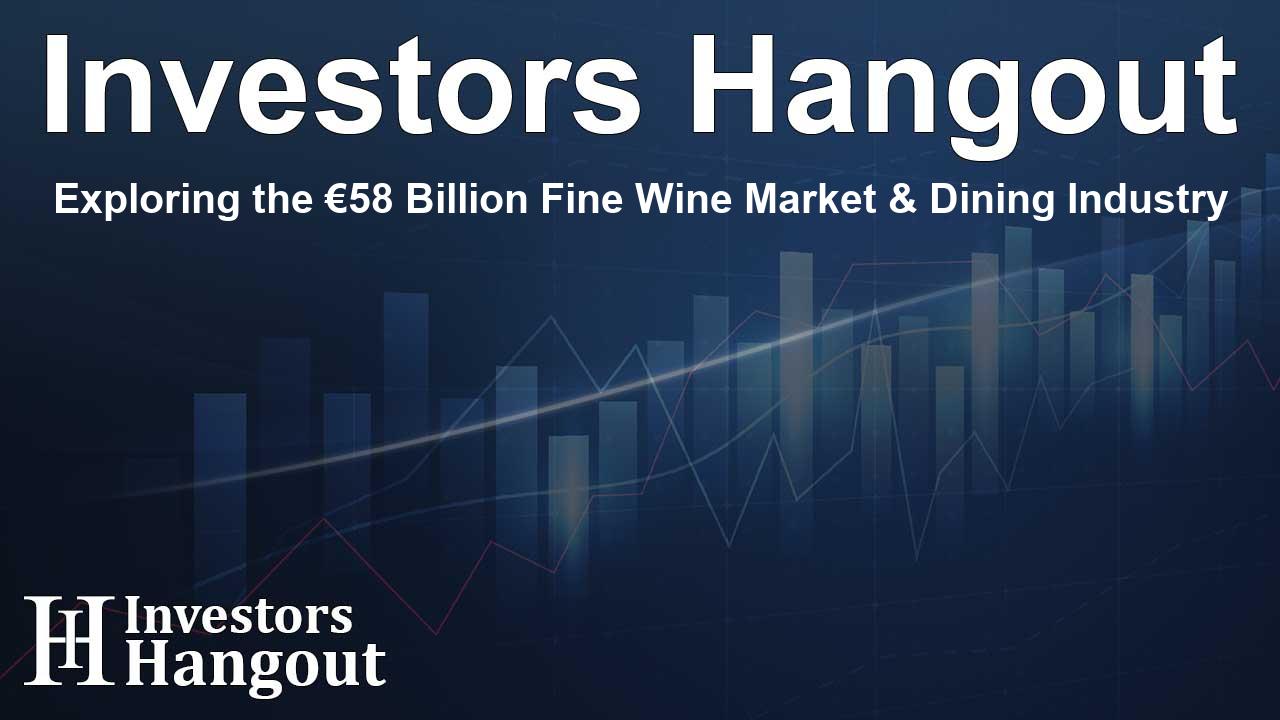Exploring the €58 Billion Fine Wine Market & Dining Industry

The Fine Wine Market Sees Explosive Growth
The fine wine market is continually establishing itself as a vital pillar within the global luxury landscape, recently achieving a staggering estimated valuation of €30 billion. This remarkable figure reflects the market's ongoing evolution and its capacity to adapt to shifting consumer preferences. As wine enthusiasts increasingly appreciate the finer offerings, this segment becomes an integral part of the €1.48 trillion luxury market. This development not only highlights the importance of fine wines but also underscores a burgeoning interest in premium dining experiences.
Fine Dining's Phenomenal Recovery
In parallel with the fine wine market, the fine dining sector is experiencing a rebirth, boasting an impressive growth rate of 27% from one year to another, putting its estimated market value at about €28 billion. This resurgence can be attributed to changing consumer dining habits, alongside a rising demand for quality dining experiences. More than ever, consumers seek establishments that deliver not only exceptional culinary fare but also memorable social engagements.
Experience-driven Dining
As the dining landscape shifts, consumers lean toward experiences that combine gastronomy with entertainment and social interaction. Despite the traditional fine dining model prevailing, immersive experiences are expected to constitute up to 20% of the market by 2024. Fine wine plays a crucial role in this transformation; its pairing with exquisite dishes contributes significantly to revenue generation in high-end restaurants, with a notable share of €6-7 billion.
Market Dynamics and Emerging Trends
The fine wine industry is characterized by a mosaic of large and small producers, with the top 10 brands holding approximately 35% of the market share. This fragmentation represents unique opportunities and challenges for different market players. Various consumer segments, such as collectors and connoisseurs, cater to distinct preferences and approaches to wine appreciation, helping to diversify offerings further.
Generational Shifts in Consumption
Today's wine consumers are markedly influenced by a younger demographic, especially Gen Z, who increasingly embrace the NoLo (No and Low Alcohol) trend. This shift toward lower-alcohol options illustrates a growing awareness and desire among younger generations to align their consumption habits with their lifestyle choices, challenging producers and marketers to rethink their strategies.
The Investment Landscape for Fine Wines
As fine wines gain recognition as viable investment assets, the sector showcases strong demand against a backdrop of limited supply. Over the past decade, fine wines have witnessed more than twofold price appreciation, outpacing numerous luxury asset classes. This trend reinforces a growing perception of fine wines as long-term investments that consistently provide value, even during economic uncertainties.
Market Resilience Amid Challenges
Despite its growth potential, the fine wine market faces unique challenges, including consolidation trends and the impact of climate change. Increased mergers and acquisitions, especially in the U.S., mark a shift toward resilience and adaptability in the face of market volatility. The accelerating implications of climate change also compel the industry to reassess traditional vineyard practices, spurring innovation and environmental considerations that could reshape the sector for years to come.
Fine Wine and Dining's Bright Future
The fine wine and dining spheres are poised for continued growth, with projections indicating a robust market expansion, potentially reaching €35-40 billion by 2030 at a CAGR of 4-6%. This trajectory highlights the sector’s enduring appeal and adaptability to new consumer behaviors and market dynamics. While existing challenges persist, the fine wine market is firmly situated within the luxury landscape, continually offering opportunities for investment and enjoyment.
Frequently Asked Questions
What is the current value of the fine wine market?
The fine wine market is currently valued at approximately €30 billion.
How fast is the fine dining industry growing?
The fine dining industry is experiencing remarkable growth, with a reported increase of 27% projected for its market value.
What trends are influencing younger wine consumers?
Younger generations are increasingly embracing the NoLo (No and Low Alcohol) trend in their consumption habits.
How significant is fine wine as an investment?
Fine wines have witnessed more than a twofold price appreciation over the past decade, proving to be a resilient investment asset.
What challenges does the fine wine industry face?
The fine wine industry faces challenges from market consolidation and climate change, prompting necessary adaptations and innovations.
About The Author
Contact Dominic Sanders privately here. Or send an email with ATTN: Dominic Sanders as the subject to contact@investorshangout.com.
About Investors Hangout
Investors Hangout is a leading online stock forum for financial discussion and learning, offering a wide range of free tools and resources. It draws in traders of all levels, who exchange market knowledge, investigate trading tactics, and keep an eye on industry developments in real time. Featuring financial articles, stock message boards, quotes, charts, company profiles, and live news updates. Through cooperative learning and a wealth of informational resources, it helps users from novices creating their first portfolios to experts honing their techniques. Join Investors Hangout today: https://investorshangout.com/
The content of this article is based on factual, publicly available information and does not represent legal, financial, or investment advice. Investors Hangout does not offer financial advice, and the author is not a licensed financial advisor. Consult a qualified advisor before making any financial or investment decisions based on this article. This article should not be considered advice to purchase, sell, or hold any securities or other investments. If any of the material provided here is inaccurate, please contact us for corrections.
